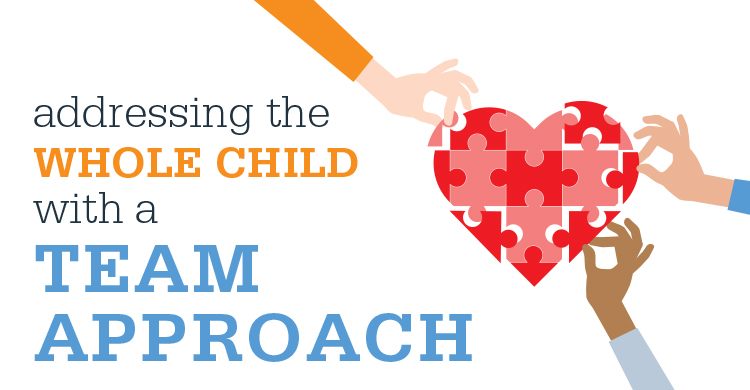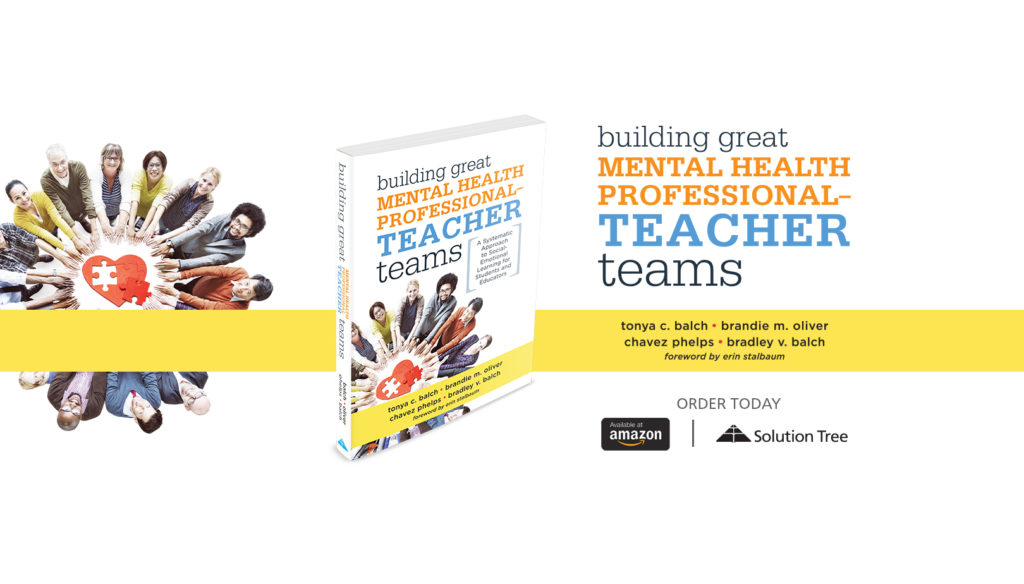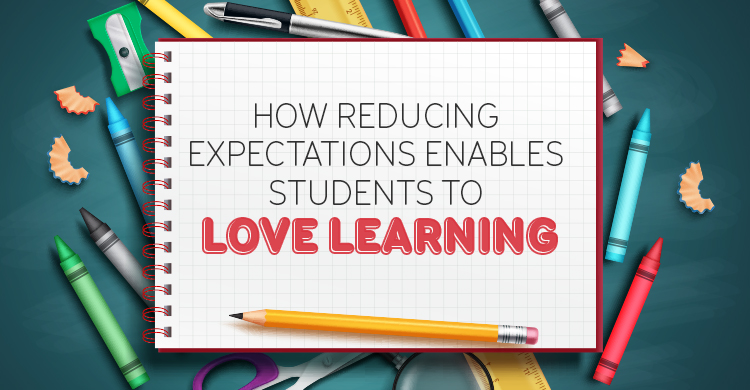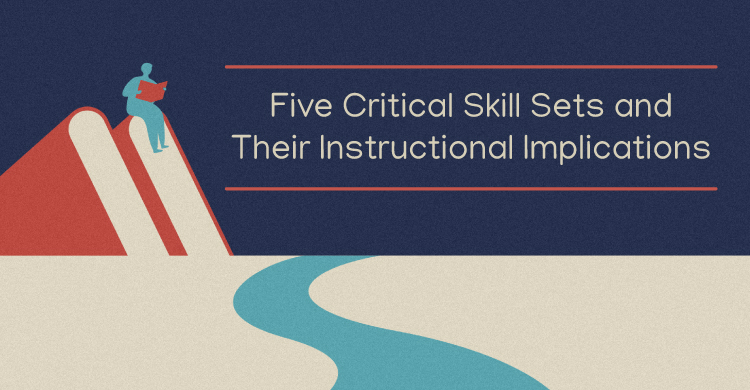Based on Building Great Mental Health Professional–Teacher Teams
Education is clearly in an era of rapid change, with many pressures bearing down on the teaching and learning environment—from student and family challenges to the need for continuous improvement while addressing the whole child.
This can be daunting, if not exhausting, for educators. In fact, many educators did not receive the pre-service training to address these complex and often competing pressures. Other educators may have access to quality professional development related to whole-child issues but have not been able to successfully translate these new learnings into new classroom skills or dispositions.
Under these circumstances, the job of professional educator can seem lonely and even exhausting over time. In most cases, the pandemic has only served to escalate these pressures. It is hoped that our resource, Building Great Mental Health Professional–Teacher Teams, can provide the essential cornerstones to address the whole child in meaningful ways through a team approach.
The concept of team is key to the book’s overall message, in which team members are encouraged to allow for a degree of role and responsibility overlap. In the past, many teachers and mental health professionals operated discreetly, with each independently addressing student needs. However, much is to be gained when teachers and mental health professionals work together, especially in the natural setting of the classroom. While overlapping roles and responsibilities can serve as a source of tension, we maintain that team tension from overlap is both manageable and predictable.
Additionally, we posit that the tension from overlap will remain an inherent quality of effective teams for years to come. To address this, in part, each chapter of the book contains professional development activities to deepen the meaning of the chapter content and improve the team’s ability to work together effectively. Importantly, the book not only addresses the health and well-being of students, but educators as well. An emphasis on both students and adults are an imperative for optimal teaching and learning to occur.
This book’s team perspective addresses a myriad of critical topics in education in a manner that is easy to implement in the classroom by sharing mental health professionals’ knowledge and skills with classroom teachers. For example, simple changes in language with students can de-escalate a dysregulated student and allow them to stay in the classroom as opposed to traditional exclusionary practices of sending them out of the classroom for an administrative or mental health professional (e.g., counselor, social worker, or school psychologist) referral.
The well-known effects of poverty on academic achievement is explored, as well as the different types of poverty impacting student learning. Practical interventions for mitigating the effects of poverty both in the classroom and at the school level are discussed. These interventions are easily implementable with thoughtful planning.
The interrelated nature of self-regulation (managing your thoughts, emotions, and behaviors), executive functioning (managing oneself and resources to achieve a goal), and mindfulness (being present in the moment) is explored in layperson’s terms. A series of mindfulness activities is presented that the mental health professional–teacher team can teach students in the classroom that will help students self-regulate and maintain focus during class. As previously noted, these mindfulness activities are beneficial for adults as well as students.
A growth mindset is explored in concepts such as engagement, perseverance, neuroscience, intrinsic motivation, and empathy. Specific strategies and language associated with fostering a growth mindset in the classroom are presented. The benefits of promoting resilience in students is discussed, and specific strategies for classroom implementation are presented.
Individual, family, and community risk factors that influence a student’s reaction to trauma are discussed. The effects of childhood trauma on students’ academic, behavioral, and socioemotional development is presented. The fundamentals of trauma-informed practices are discussed and specific strategies that the mental health professional–teacher team can use to implement trauma-informed care are shared.
The foundational principles of restorative practices are presented, and implementation strategies are explored. Connections between restorative practices and socioemotional learning are discussed. A myriad of examples are provided so the mental health professional–teacher team will be able to quickly understand the concepts that assist students in accepting responsibility for their actions.
The book also explores dysregulation (e.g., the inability to control emotional responses), for students and adults, and the rationale and physiology associated with dysregulation. Examples of both externalizing and internalizing dysregulation are explored. Basic brain functioning is described in a manner that is easily grasped, and links to videos to utilize in the classroom are shared. A deeper understanding of brain functioning provides a basis for the mental health professional–teacher team to interpret student behaviors and provide more appropriate interventions. Specific strategies for reducing power struggles in the classroom are discussed as well.
Language can escalate or deescalate interactions with both students and other adults. The basic tenets and assumptions of solution-focused brief therapy are presented as this approach focuses on adult’s language use with students and other adults. Sample dialogue and questions from a brief solution-focused perspective are presented, and are easy to implement individually with students or as a classroom-wide strategy.
Data-driven effective problem-solving approaches for the mental health professional–teacher team are also addressed to support the team in selecting interventions with fidelity to support students. Examples of classroom academic and behavior interventions are shared.
Given the pressure educators in general are feeling and the increased stress levels brought on by the pandemic, the book also focuses on educator health and well-being. Compassion fatigue and the negative impact it can have on teaching are described. Video links are provided to guide discussion between mental health professionals and teachers. Support strategies and different types of self-care (e.g., sensory, pleasure, mental mastery, spiritual, emotional, physical, and social) are explored, and a self-care plan template is provided.
The book concludes with the future of the mental health professional–teacher team, suggesting that collaborative relationships are a teaching and learning imperative. Marc Tucker (2019) argued that teachers must spend far more time teaming to produce the essential improvements needed in student performance.
Working together as a team to harness the power of collaboration to address and overcome complex educational challenges in systematic and sustainable ways is firmly supported by the mental health profession’s national associations (American School Counseling Association [ASCA], 2019; National Association of School Psychologists [NASP], 2019; School Social Work Association of America [SSWAA], 2019).
It is hoped the spirit of collaboration posited by the book across all developmental levels will inform continuous improvement, foster a whole-child approach, and provide the essential strategies and interventions to deal with a new generation of demanding needs.
References
American School Counseling Association (2019). The role of the school counselor. Accessed at https://www.schoolcounselor.org/administrators/role-of-the-school-counselor on December 28, 2019.
National Association of School Psychologists (2019). Who are school psychologists? Accessed at https://www.nasponline.org/about-school-psychology/who-are-school-psychologists on December 28, 2019.
School Social work Association of America (2019). Role of school social worker. Accessed at https://www.sswaa.org/school-social-work on December 28, 2019.
Tucker, M. (2019). Let teachers work and learn in team—like professionals. Educational Leadership, 76, pp. 48-54. Accessed at http://www.ascd.org/publications/educational-leadership/jul19/vol76/num09/Let-Teachers-Work-and-Learn-in-Teams%E2%80%94Like-Professionals.aspx on December 28, 2019.
[author_bio id=”1774″]
[author_bio id=”1339″]







